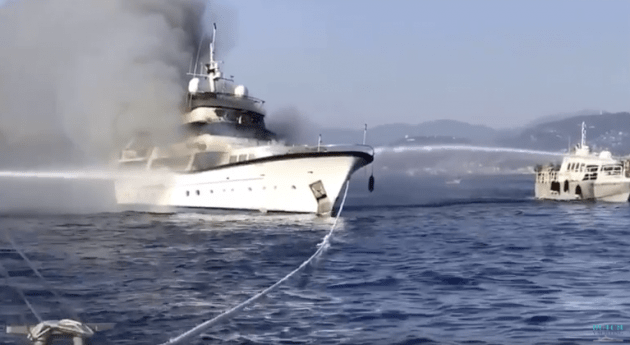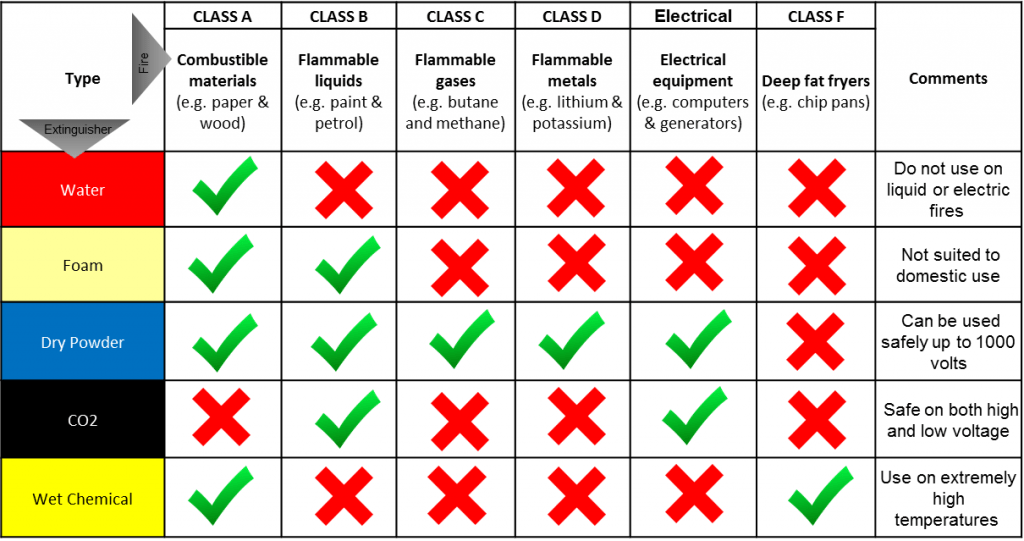
Fires on motor yachts
Fires on motor yachts are more common than you may think. Last Thursday afternoon off the coast of Nice, black smoke and flames could be seen bellowing from the 39meter Motor Yacht, IF ONLY, which was anchored about 6 kilometers south of Nice airport.
Over 60 trained fire-fighters in six different boats quickly arrived on the scene in an effort to extinguish the rapidly spreading fire and rescue the passengers. The rescue mission was successful and over 10 guests and 8 crew escaped unharmed but despite efforts to establish a tow and save the yacht, she finished by sinking and is believed to be lying at 650meters below sea level.
The cause of the fire has not yet been declared and there is an investigation currently underway.
Prevention is better than cure so it’s imperative that all crew are trained in a manner to deal effectively with the unfortunate event of a fire breaking out onboard the yacht. With a lot of fires, there is often an element of human carelessness or negligence involved and so vigilance and good housekeeping practices are essential.
Below we outline for you some of the most common causes of fire on motor yachts; preventative measures and extinguishing techniques:
Smoking
When cigarettes are not properly extinguished, glowing ashes can rapidly ignite materials or wooden surfaces. Smokers really need to be vigilant to ensure their cigarettes are properly extinguished and definitely not thrown overboard. Not only do cigarette butts take approximately 2 years to break down and are toxic to marine life, they can get caught by the wind and land back on deck. Special ashtrays with lids should be used to prevent glowing ashes from escaping and a special ashtray bin should be used before discarding. Smoking should be banned in sleeping areas.
Electrical Machinery
While electricity is generally a safe and convenient source of power, it can become an extremely dangerous fire hazard if equipment is worn out, misused or incorrectly wired. Crew need to be diligent and regular checks of all electrical equipment should be carried out regularly. Items such as irons and hair straighteners should not be left unattended while still hot and care should be taken not to overload electrical sockets with plugs.
Only approved electrical equipment that will stand the strenuous conditions at sea can be installed and used on board a ship. Any electrical equipment onboard must be installed, maintained, tested and repaired in accordance with existing regulations and only by qualified personnel.
Oil Rags
Oily rags used to maintain ships machinery when left lying around can also cause fires. Oil is highly flammable and can actually self-ignite at high temperatures. Engineers and machinists must be diligent in their efforts to clean up after servicing of equipment.
Bacteria
When flammable waste such as oily rags are left in the rubbish bins with biodegradable waste such as food, thermophilic bacteria can develop which can cause enough heat to ignite a fire when the waste is exposed to air. Care must be taken to dispose properly of all waste.
Vessel Hot Spots: Galley & Engine Room
Galley
One of the most likely areas for the fire due to all the electrical cooking equipment and hot oils which can unfortunately lead to extremely hot fires. All cooking equipment needs to be thoroughly cleaned to prevent any oil or grease accumulating in or around the oven and hot plates. Used items such as boxes, bags, paper, and biodegradable waste such as food leftovers should be placed in covered non-combustible refuse bins. Deep fat fryers should be in a fixed location and must never be left unattended while in operation.
Engine Room
A fire in the engine room is the most dangerous as it not only disables the ships motors but can also lead to a blackout situation which can result in collision or grounding of the ship.
Engine rooms are warm from the engines running, fuel is present and gases are contained in pipes under high pressure. As fires need oxygen, fuel and heat to ignite and sustain their flames, the engine room is a prime area for being a fire hazard. A leak within a high-pressure pipe or fuel reservoir will result in puddles of fuel or oil, or escaping exhaust gases are all hazards which can contribute to the risk of combustion and fire ignition. Leakage of substances can be caused by a break down in clamps or connections in pipes or gauges. Human diligence and attention to detail is imperative in prevention of fire breaking out in the engine room.
Methods of Extinguishing Fires
Fire Extinguisher
Portable fire extinguishers are the first line of defence. Most fires have small beginnings and the purpose of the fire extinguisher is to extinguish or control the fire before the major appliances are brought into use. All equipment should be maintained in a state of readiness in case it is needed.
There are various types of fire extinguishers which are colour coded to make recognition easy.
Fire Blanket
Fire blankets work by removing the oxygen from the fire. The fire blanket is often found in the galley as it effective in extinguishing fires that break out in frying pans. The blanket should be placed over the fire, tucked in and left to cool.
Sprinkler System
The sprinkler system is an automatic fire detecting, alarm and extinguishing system which is fitted to deal quickly & effectively with the outbreak of fire. It can be operated automatically or manually. The system consists of a pressurised water tank with pipes leading to various places within the vessel. When triggered, water nozzles supply a very fine mist over the area.
CO2 Extinguishing system
The CO2 fixed fire extinguishing system is the most common method used for fighting very serious fires on ships. They system works by flooding the area with CO2 and depriving it of oxygen.
Prior to operating the CO2 system precautionary measures must be taken, fire doors must be closed and the area must be air tight. All crew or passengers must be accounted for to ensure there is nobody in the area.
So, we’re all aware how fires can break out very easily and spread fast if not controlled in time. Remembering your fire training from STCW course, participating in regular fire drills, asking questions and reporting possible fire hazards will all contribute toward a safer working environment for you, maybe you will avoid saying to yourself one day IF ONLY…
